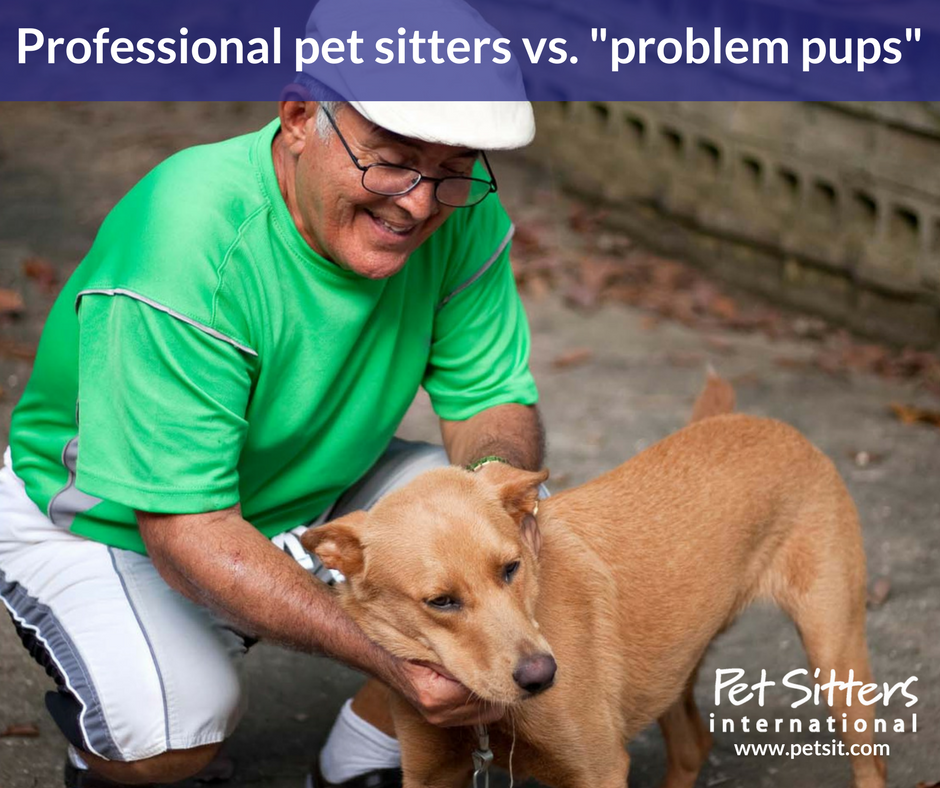Professional pet sitters vs. "problem pups"

As a professional pet sitter you know that no two dogs are the same, and each day you are likely to deal with a variety of issues as you complete your pet-sitting assignments. While you love all of the pets you care for (and truly don't consider any "problem pups"), it is very likely that you'll have to address undesirable canine behaviors on some of your pet-sitting assignments.
As a professional pet sitter, you also become a trusted advisor on all things pets for your clients. So, it's also very likely that clients will contact you for advice about their pets' problem behaviors. While it's important that you refer clients to veterinarians, professional dog trainers and animal behaviorists when needed, it's also a good idea to understand and have tips to share with your clients on common undesirable canine behaviors.
In the July/August 2015 issue of PSI's member magazine Pet Sitter's WORLD, Teoti Anderson, a frequent contributor to PSI publications and speaker at PSI conferences, shared tips on dealing with some of the more common pup problems of barking, digging and chewing. (PSI members, see p. 6 of the July/August issue for her article!)
Read on for some basic tips you can offer for clients dealing with these common canine issues.
Dealing with a dog that loves to bark...
Dogs bark for a variety of reasons. Some dogs bark when they are frightened; others bark when they are being protective or alerting you, and some dogs simply bark because they can!
Your response or your client's response to the barking will determine if the barking improves are becomes worse.
What you shouldn't do...
- If a dog barks at another dog, don't yank him back/jerk his leash or pull him back by his collar.
- Don't yell at the dog when he barks...he'll just think you are joining in!
- Make sure you are not rewarding the barking.
What you can do...
- Teach your dog to bark on cue.
- Manage the situation. For example, if your dog is looking out of the window and barking at squirrels, close the blinds!
- Provide a stimulating environment to prevent boredom.
- If the barking is fear based, work with a positive trainer to help your dog gain confidence.
Be sure to check out p. 6 of the July/August issue of Pet Sitter's WORLD for "Problem Pups: Dealing with Barking, Chewing and Digging," for a detailed explanation of barking, digging and chewing issues and tips for addressing these behaviors.
Stopping a dog's destructive chewing...
Dogs chew for a variety of reasons, but the main ones are:
- teething
- boredom
- separation anxiety
Understanding the reason for the dog's chewing can help you determine the appropriate way to address the problem. For example, puppies are teething between four to six months of age and chewing eases their gum discomfort.
To discourage destructive chewing in a teething puppy:
- Provide the puppy with appropriate items to chew on, such as Nylabones, sterilized bones or durable, hollow rubber toys like Kongs.
- Confine the puppy in a safe space away from inappropriate items to chew by using a crate or baby gate.
- Because teething causes gum pain, you can give the puppy ice to chew on or make "chicksicles" by putting chicken broth in ice cube trays and freezing it.
- Teach the puppy which items are appropriate to chew and praise him when he chews on appropriate toys.







Comments
Linnea
Good luck! It seems you know what to do, having written on this post, all else will fall into place. “)
Lils
The owner rarely reprimands the pup and has no consistency with rewarding good behavior unless for training photoshoots.
As a new pet sitter, what do I do?
She and her family have different routines for the pup. The family treat him as a pet and not as a human that sleeps on the bed and eat at the table for photoshoot purposes of course. The owner is a model when the rest of the family work as nurses and engineers and writers.
I’m afraid that the pup is getting mixed signals and he is a bit confused since the owners are all on different pages, though they all love him dearly. He doesn’t understand why he can’t sleep on the bed and eat at the table when not with the owner and do what he pleases when the owner is not around.
Please help... this is the only pet that I have like this when different from all my other pet sitter jobs.
I believe it’s because the other owners were actually on the same page with me with the exception of the diva model.
I feel really bad for the pup and don’t want to jeopardize my relationship with the owner.
Ellen A. Chiantelli
Thank you for the downloadable resources.